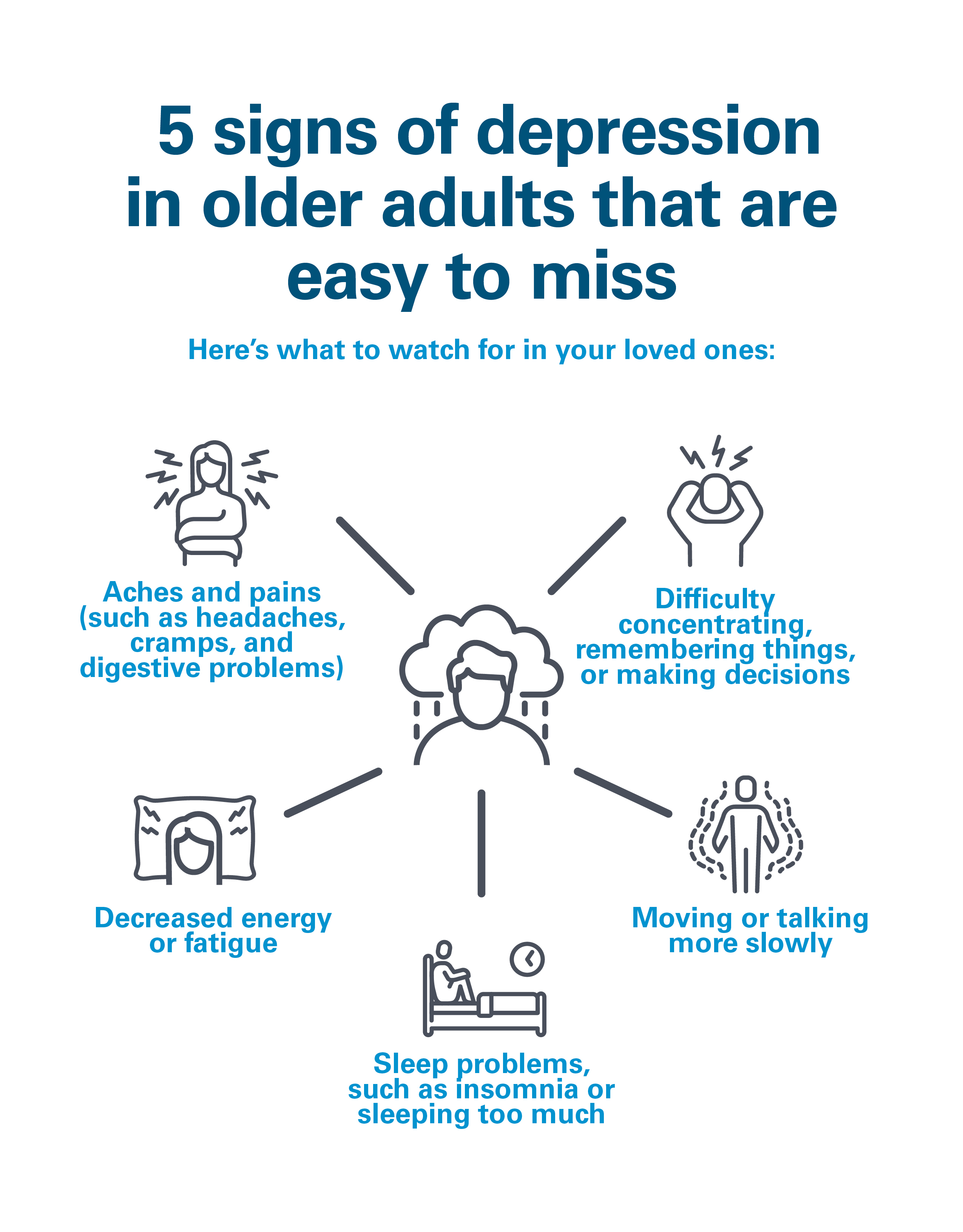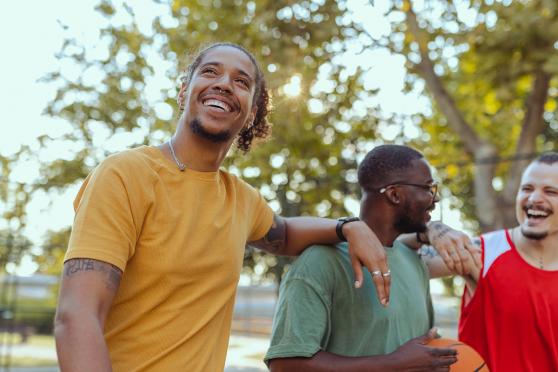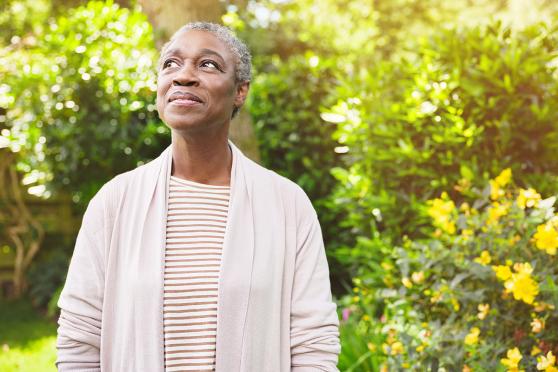What depression looks like in older adults — and how to help
Depression doesn't look the same at every age. Learn the symptoms of depression in older adults, plus expert tips to help support your loved one.

Feeling blue now and then is normal, no matter what your age. Maybe a good friend moved away, or a sad memory popped into your head. But when an older loved one feels stuck in that low mood, it could be a sign of depression.
Clinical depression isn’t a normal part of aging. According to the National Institute on Aging (NIA), most older adults report feeling satisfied with their lives. But depression can still affect older adults. The Centers for Disease Control and Prevention reports that between less than 1 to about 5 percent of older adults living in the community have major depression. Those percentages are higher for older adults who are hospitalized (11.5 percent) and those who require home health care (13.5 percent).
The important thing to remember: Depression is a treatable condition. Once you know how to spot the symptoms of depression in older adults, you can help your loved one take steps to feel better. Here’s what you need to know.
What causes depression in older adults?
According to the NIA, there are several factors that can lead to someone having depression, including:
- Genetics (having a family history of depression)
- Brain chemistry (it’s different in people with depression versus those without it)
- Stress (including losing a loved one)
Other causes might include having a medical condition (such as heart disease, stroke, or cancer), or the side effects of a medication. Sleep issues, substance abuse, lack of exercise or physical activity, feeling lonely, or being socially isolated can also play a role.
How can I tell if my older loved one is depressed?
The signs of depression in older adults can be tough to spot. One reason: People mistakenly attribute some depression symptoms, such as fatigue, to being a normal part of aging. Or the cognitive changes associated with untreated depression may be mistaken for dementia.
What’s more, older adults may show different depression symptoms than younger adults. For example, persistent sadness can be a symptom of depression. But for some older adults, feeling sad isn’t a main symptom. Instead, they may show up to the doctor’s office multiple times with a vague idea that something is wrong.
They may also exhibit symptoms such as:
- Eating more or less than usual
- Feeling hopeless and helpless
- Loss of interest in activities they once enjoyed&
- Persistent feelings of numbness
If you notice these symptoms in your loved one, it’s important to help them seek treatment before it starts to affect other parts of their life. Older adults with depression may have a harder time caring for themselves. They may struggle to keep up with their health regimen, such as taking medications as prescribed.
How can I help an older loved one who has depression?
When you’re caring for an older loved one with depression, there are a few things you can do to help, according to the NIA.
Help them schedule a visit with their doctor.
Your loved one’s primary care physician can diagnose depression and help rule out other culprits that may be causing their symptoms. (For example, some medications and health issues can lead to depression or depression-like symptoms in older adults.) You can even go to their appointment with them. Their doctor may suggest talk therapy or prescribe psychiatric medication, such as an antidepressant. Talk therapy can help your loved one identify negative thought patterns and change the way they think and act. Antidepressants help balance serotonin — a “feel-good” hormone — in the brain.
Remind them to take their medication.
If your loved one has been prescribed an antidepressant, it’s important that they take their medicine exactly as prescribed. You can help them by setting recurring alarms on a phone or alarm clock. You can also help them bundle habits together. For example, if your loved one likes to have a cup of tea every morning, keep their medication near their kettle to help them remember to take it.
Plan fun activities to do together.
Depression can lead to a loss of interest in activities your loved one once enjoyed. Planning fun things to do together may help them feel more like themselves. If your loved one loves to play word games, for example, challenge them to see who comes out on top in a game of Scrabble.
Encourage them to get moving.
Physical activity isn’t just good for your body. It can also help your brain. According to the NIA, regular exercise can help reduce feelings of depression and improve mood. Consider asking your loved one to join you on a walk — or suggest weeding their garden together.
Help them get enough nutrients.
Older adults have unique nutrition needs, according to the National Council on Aging (NCOA). Helping them eat a balanced diet can boost mental wellness, as well as help prevent certain health conditions that can increase their risk of depression.
Encourage a healthy sleep schedule.
According to the NCOA, older adults should aim to get between seven and nine hours of sleep every night. Winding down before bed can help your loved one get better-quality sleep. That means no screens, caffeine, or alcohol for at least a few hours before they lay down.
Just like diabetes or a heart condition, depression is a disease that needs treatment. The good news? Most older adults see an improvement in their depression symptoms after receiving talk therapy, medication, or a combination of the two. With some encouragement, you can help your loved one get on the road to feeling better.



